Motorola Radio, and without a CPS cable.
October 2011 - AWal
The title pretty much says it all.
I had purchased one off of ebay (like most ppl for murs radios, retail is
a jyp if you ask me...) and for consistencies sake it was an RDM2070d. These
are the OEM models that are made for WalMart stores (and suposedly Sams Club,
but the Sams in my area still uses the XV2600 that we still have a few of).
The motive behind getting my own radio was simple, people were hoarding the
radios and telexons...It's expected, but I was in a situation that requires
a radio, Cart Associate. I managed to get mine about half-price before shipping
from someone who had accidentally purchased a MURS radio, when they really
needed a VHF radio (apparently the company he worked for had a license to
operate on a specific, non-free frequency).
So, like most electronics I own, I had to crack the sucker open.
I'm not going to provide teardown photos, but it seems like a lot of parts are generic for a
range of radios. The PCB has only one label with the part number and "VHF."
This is no suprise given that MURS is basically just a few frequencies taken
from the original VHF band frequencies and watered down to 2 Watts.
The part that struck my interest was an "M95320" made by STMicroelectronics.
Thats a 32Kbit 3-Wire Serial EEPROM (3-Wire = SPI...which originated from
Motorola...go fig). EEPROMs are easy to dump...let's rip that...

The design was very crude, but my EEPROM burner only took dip-style chips, so
I needed an adapter. With no 1:1 soic to dip available, I made my own.
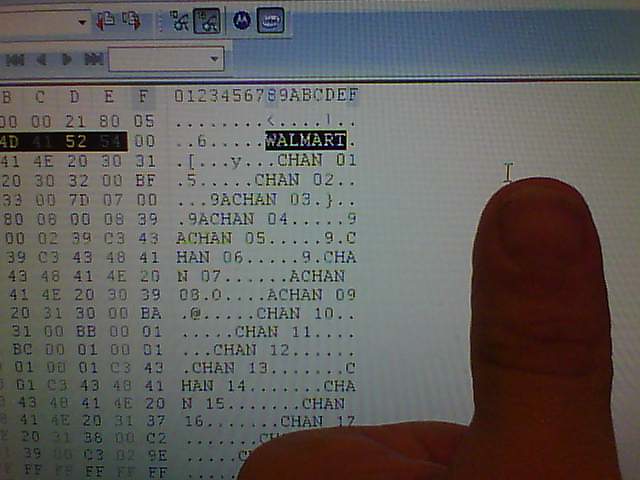
Wait...is that WALMART...in ASCII...wow, Motorola, you made this too easy...
Okay...so first, lets change the WALMART text then re-burn the EEPROM.
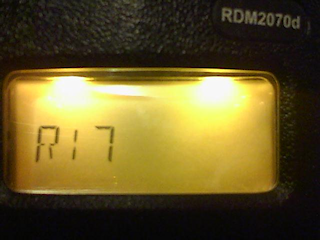
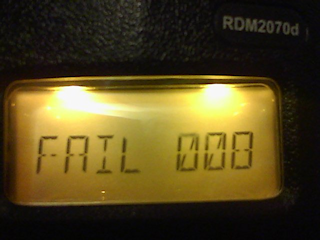
Damn...not that easy. So it looks like there's a checksum or CRC somewhere.
In an attempt to desolder it a second time, a leg broke. It was a good thing
that I took a rip of the chip, or I would've been screwed.
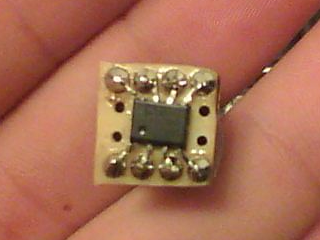
So I bought a replacement chip (or rather...many...since nobody apparently stocks
the dip version of this damn chip).
I'm not too sure if the radios require a chip capable of 1.8v, but they work
with the ON Semiconductor CAT25320 (25320VI to be exact) without issue, so
they probably use low voltage and low rate (ON Semi's only does 10MHz clock tops with 2.5v-5.5v).
It's strange that Motorola would use a High-Speed SPI EEPROM (50MHz Clock @ 5.5v), mabye for factory
programming...but if that were the case they'd just gang program the damn things...
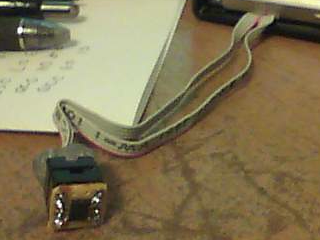
This time I soldered a socket to some wires, then the wires to the board.
Time to prototype :)
There is exactly 20 check digits in the EEPROM's main data section. There
also appears to be code and some other stuff I couldn't quite make out.
The device refuses to operate without an EEPROM, and the same goes for running it
with a blank EEPROM.
--THIS IS PRELIMINARY, I MAY BE WRONG, YOU CAN AND PROBABLY WILL BRICK YOUR RADIO--
EEPROM Memory Map:
0000 - 0139 Main Data
013A - 03FF Unused
0400 - 04AF Data (Purpose Unknown)
04B0 - 07FF Unused
0800 - 0A9F Data (Purpose Unknown)
0AA0 - 0BFF Unused
0C00 - 0D6F Code (Could be data, appears to have vectors though)
0D70 - 0E2F Data, similar to 0400 (Purpose Unknown)
0E30 - 0FFF Unused
Unused sections are filled FF in my EEPROM (Mabye just not programmed)
Main Data (000 - 0139):
Address
- Factory Default Value
- Description
0000 - 17 - Unknown - Mabye related to R17 FAIL 008 (from bad EEPROM).
0001 - A1 - 10100001
????SL??
S - Keypad Beep (SB2 at power-on) : 1 = Muted
L - Keypad Lock (Hold Menu) : 1 = Locked
0002 - 00 - Channel on power on ( 00 = "CHAN 01")
0003 - 00 00 01 07 05 3C 00 00 00 00 21 80 05 07 00 36 00 00 - Unknown
0015 - FF FF FF - Unused
0018 - W A L M A R T 00 - Power Up Text
0020 - 00 - Unknown
0021 - 53 - --Check Digit--
0022 - 00 00 - Unknown (These are probably unused since they aren't checked)
Channel Data:
Address
- Offset
01 - 0024
02 - 0032
03 - 0040
04 - 004E
05 - 005C
06 - 006A
07 - 0078
These are probably unused, but follow suit, and are in the right places:
08 - 0086
09 - 0094
10 - 00A2
11 - 00B0
12 - 00BE
13 - 00CC
14 - 00DA
15 - 00E8
16 - 00F6
17 - 0104
18 - 0112
19 - 0120
Each Channel Data segment is fourteen bytes long (example used is factory
default "CHAN 01"):
n + 0 - 02 - Frequency (0 = Frequency 1)
1 - 00 - Code (0 = Code 000, 00 - 7A are valid)
2 - 02 - Default Frequency (Not sure of use, since these would be)
3 - 00 - Default Code (overwritten anyways on reset...)
4 - C H A N 20 0 1 00 - Channel Alias
D - BC - --Check Digit--
0123 - 02 9E 02 9E 02 9E 02 9E 02 9E 02 9E - Unknown, probably garbage
013A - FF .. - Unused
--Check Digit-- Computation:
Generate 8-Bit Checksum, then + 5A...yep, that's all there is too it...
Both Main and Channel check digits are computed the same
Let's use an example ("CHAN 01" Factory Default)
C H A N 0 1 XX
02 00 02 00 C3 43 38 41 4E 20 30 41 00 BC
n SUM
02 02
00 02
02 04
00 04
C3 C7
43 10A
38 142
41 183
4E 1D1
20 1F1
30 221
41 262
00 262
5A 2BC
BC=-BC - Piece of cake, right?
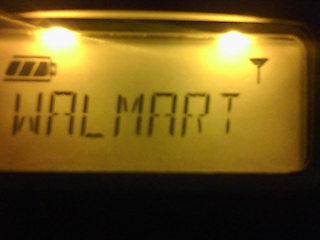
Well, with the proper check digit knowledge, I was able to hex in my own
channel alias and power up text, which was the main goal of this experiment.
Additionally, I think I might have found out how to change the frequencies
on a MURS radio without cloning a VHF radio...if that even works, it's just
a speculation.
TODO:
I need to figure out more bytes...I can probably find the "Roger Beep Tone" bit if I
can locate another compatible radio to listen with...I'm not buying another given
the somewhat heavy price tag...mabye a broken one with FAIL 008 lol :)
If you have anything to contribute, especially EEPROM dumps from other radios
(RDM2080d, RDV2080d, RDM2020, RDV2020, CP110, RDV5100D) I would be interested.
UPDATE!
I've been revamping my design to allow the radio to be charged on a standard dock.
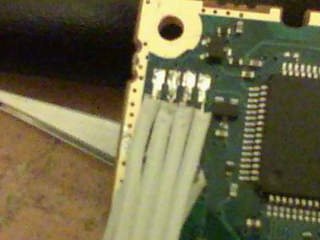
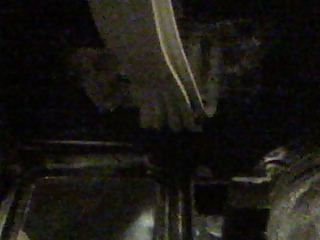
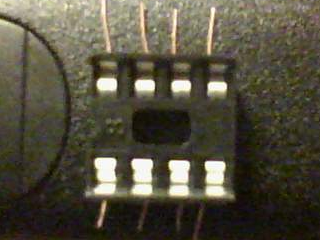
This cleaner design is also a lot more plesant to the eye. :)
